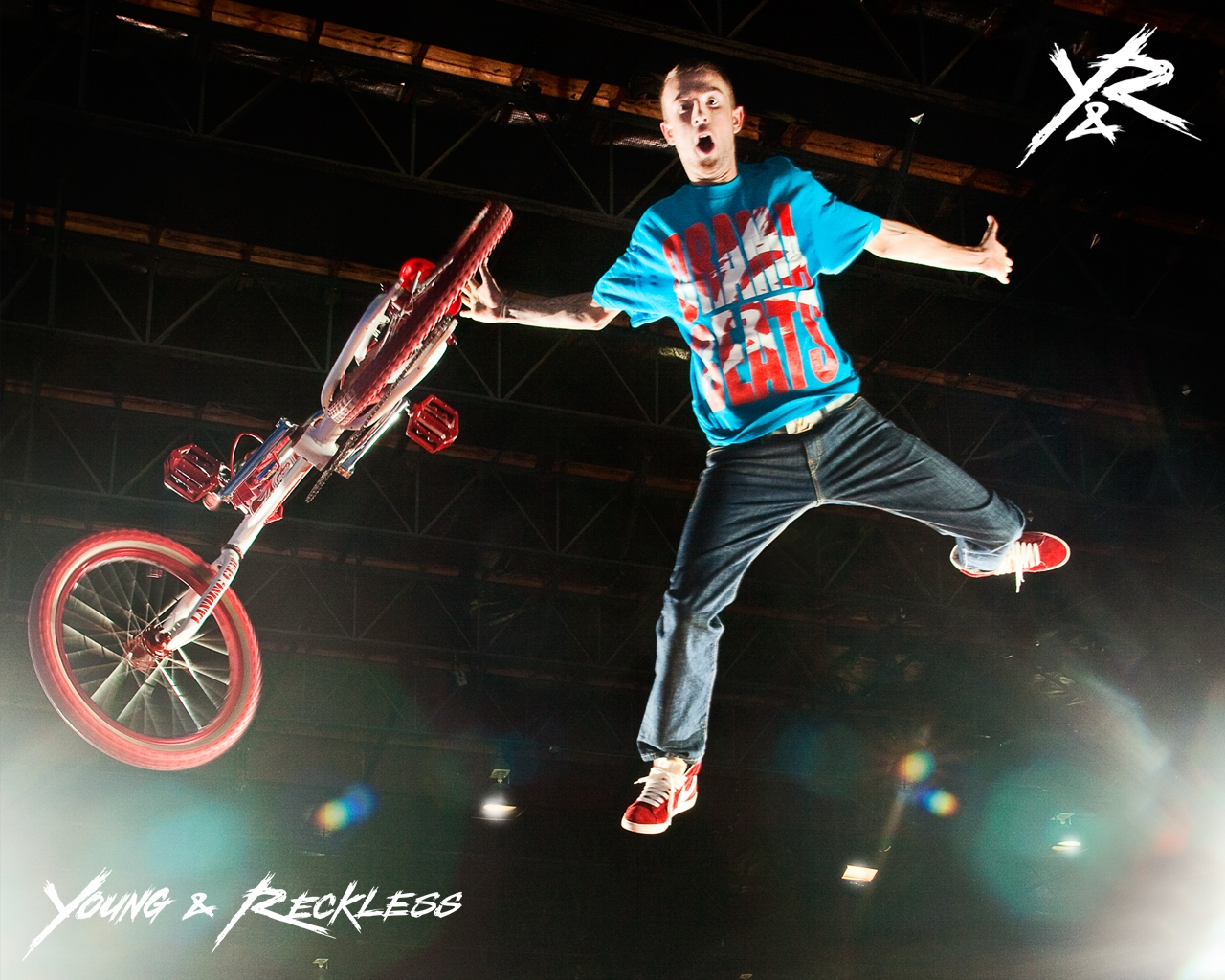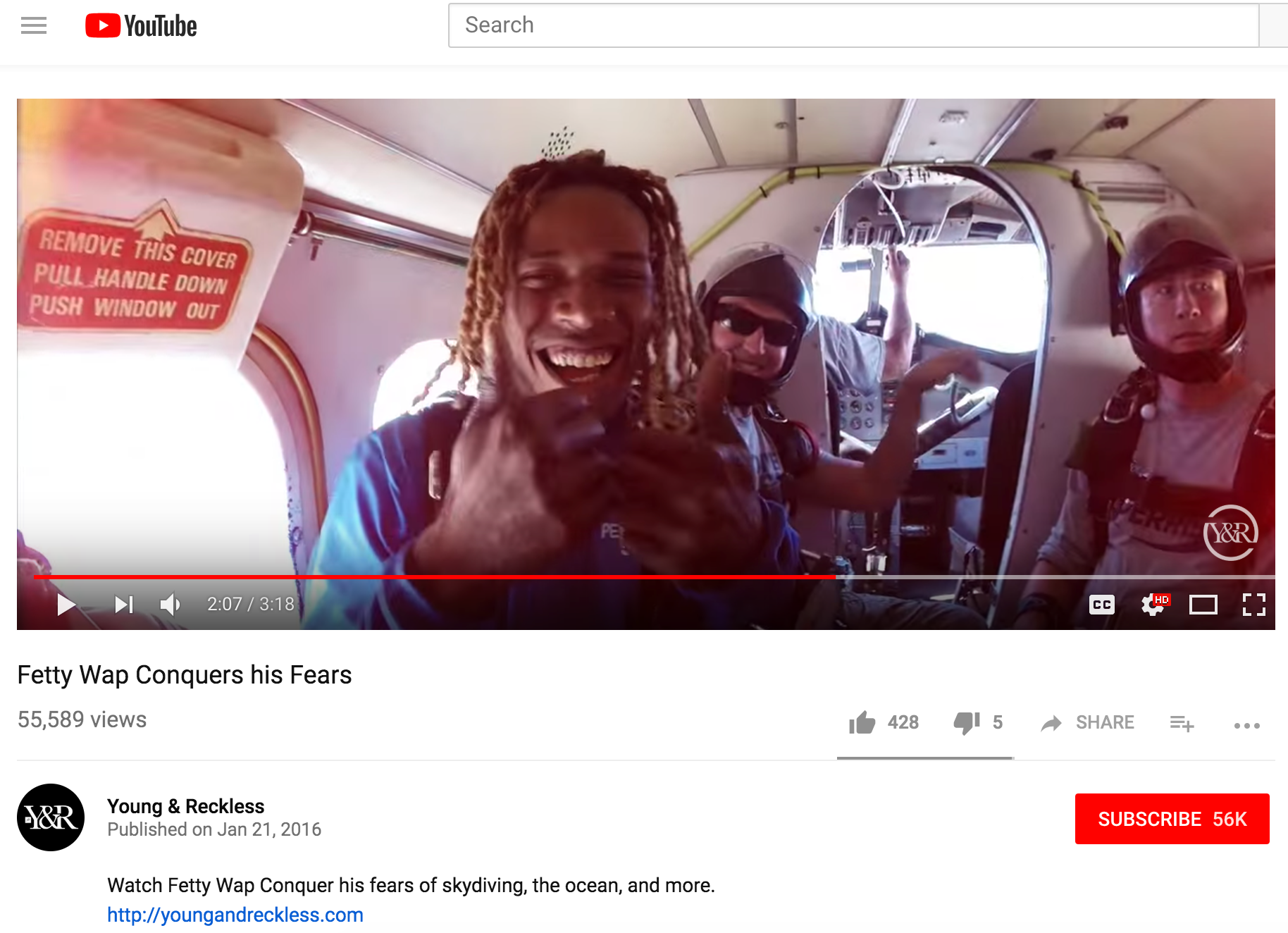- Young & Reckless was born on skate ramps and MTV reality shows, but has grown into a wholesale powerhouse through the hustle of its founder
- Last year, a renewed devotion to ecommerce led to online revenue more than doubling, and in 2018 the brand is poised to break the $10M-$12M mark in online D2C sales
- As its offline-to-online surge continues – YoY gains in AOV (up 15%) and conversion rate (up 24%) – Young & Reckless has become a multi-channel maestro, using YouTube to master customer engagement
When the skull cracked, his brain hemorrhaged so badly that it took four full days to emerge from the coma that followed.
It was then that Chris Pfaff figured he’d finally had enough.
He was a skateboarder from Ohio, still young, still with ambitions to go pro. But when the wipeout came, it became clear to Pfaff that there might be other ways to live a life.
What a difference consciousness has made.
Pfaff, who mercifully escaped his fall without long-term damage, moved to Los Angeles, where he appeared on two reality TV shows and then – in 2009, at age 22 – founded his fashion line, Young & Reckless. Since, the company has grown into a national brand, with distribution at PacSun, Macy’s, and Dillard’s, complete with celeb followers like Diddy and Justin Bieber.
But it’s a company that is, like its founder, always changing, always evolving.
For a time, Pfaff, a fixture known as “Drama” on his cousin Rob Dyrdek’s MTV shows, lived as the young creator of a brash streetwear brand might be expected to. He leased a Lamborghini, then a Rolls Royce. He once lept from a sixth-floor window to show what he was made of.
“You do have to be the poster child for the life you’re preaching,” he told Forbes in 2016. “But I don’t feel the pressure to do that anymore.”
Instead, as the boss mellows, his business takes on another life.
Through a multi-channel approach that merges an impressive tech stack, a killer return rate, and an average order value bump that is proving this offline-to-online surge is real, ecommerce is changing what’s possible for the bottom line of Young & Reckless.

The World's Next Great Clothing Line
How’s this for a bold business debut?
As a recurring cast member of “Rob Dyrdek’s Fantasy Factory,” which ran on MTV for seven seasons between 2009-2015, Pfaff was given a tiny office that was often shown on camera.
He covered it with logos of his new company so they would be spotted in the background, and when one episode discussed Young & Reckless’ brand at length, Pfaff saw his moment to pounce.
Armed with a DVD of the show, he marched into youth retailer PacSun and proclaimed Young & Reckless would be the world’s next great clothing line. If it acted now, Pfaff said, PacSun could have Young & Reckless exclusively for the next six months.
And so it was: Young & Reckless’ clothing was launched into the world.
The better part of a decade later, and the company stands in a fine place. Aside from revenue that continues to track upward, Young & Reckless is enjoying online gains at a pace that must surely please its thrill-seeking founder.
Behind the boom is Young & Reckless’ ecommerce team, which has been tasked to keep up with a job description that seems never to hold its shape.
“The industry has changed so much that now ecommerce isn’t just the actual building and coding of a site,” says Nate Harvey, Young & Reckless' ecommerce director. “It’s merchandising, it’s digital advertising, it’s social marketing and social media, customer service and handling warehouse issues. It just kind of grew and blossomed as we grew and blossomed.”
When Harvey arrived at the company, Young & Reckless was less than a year into building its online business. In 2014, at the time it moved onto Shopify, Young & Reckless’ online revenue accounted for a little under $1 million of the company’s entire annual sales.
Within four years, it would all change.
Here’s how the company grew to more than 10X that number.
‘Tripling Down’ On YouTube
For an apparel brand with attitude to spare, social media is a godsend as an outlet for Young & Reckless to reach its buying audience.
Precisely half of all the company’s online traffic arrives via social media, in this order of volume:
- YouTube
Instagram has proven a natural breeding ground for Young & Reckless to show its style ...

… Facebook is a fitting home for Young & Reckless to try its hand at social shopping …

… but don’t sleep on number three on that list, YouTube, as the secret sauce to Young & Reckless’ social presence. The company has figured out how to make money on YouTube indirectly, with videos that serve as an extension of its brand ideals – creative and brash, connecting fun, notable people with fun, notable activity.
Skydiving with rapper Fetty Wap? It’s all on Young & Reckless’ channel …

The traffic numbers may not be as high as Instagram or Facebook, but then all traffic numbers are not created equal.
“We’re tripling down on YouTube as a format because the YouTube engagement is amazing,” Harvey says. “People go there to be engaged, whereas it’s more passive on Instagram and Facebook.”
Says Pfaff: “We’ve noticed that if we have content that has real meaning, people are more likely to click and go look at the actual product, as opposed to saying, ‘Hey, look how cool this photo is.’ People are being sold to online 24/7 now. If you get across your brand message and make people feel inspired or motivated, then they’ll go and buy your product.”
3X Instagram Return On Ad Spend
In 2017, Young & Reckless’ online business totaled $6 million. This year, Harvey says, "projections are around $10 to $12 million for the online store.”
This is a major win, and yet there is still more to achieve. The company has hunkered down and obsessed over customer experience.
Returns, the team noticed, were an area this company could stake itself as a leader. Young & Reckless employed a tech stack that featured Returnly and Recart, not to mention a very capable warehouse and customer service team, to ensure all returns were met positively by the customer.
If the company wished to do so, it could have been more of a stickler, refusing returns and haggling over fine print details.
“But we’re not going to fight the customer and nickel and dime them,” Harvey says. “If it comes down to it, we’d rather the customer have a happy experience than keep an extra twenty, fifty, sixty bucks.”
A funny thing happened: as Young & Reckless was exhausting every option to ensure its return process was seamless, the returns themselves largely stayed away. “We’re at a five percent return rate,” Harvey says, “which, in retail, is unheard of.”
Harvey and the Young & Reckless team have also bolstered its ecommerce presence through paid ads, especially those on social media, and by using influencers to promote its brand in the ways it wishes to be represented.
Through Instagram, Young & Reckless has returned 3X spend on all its ads.
Influencers and celebrities have long been a pillar of this brand’s cachet. There have been partnerships with rapper Meek Mill …

… and also more enriched design opportunities, like Young & Reckless’ collaboration with influencer Sammy Wilk (he of 3.1 million combined Twitter and Instagram followers), who designed an exclusive duffle bag for the brand:

It's all part of staying relevant, which seems to come second nature to this brand.
Whether it is through vlogs showing office life at Young & Reckless, or Pfaff's podcast, Short Story Long, the effort has a cumulative effect.
When it is always out there, Young & Reckless ensures it is always part of the popular culture.

‘Wherever They’re Going To Be, We’re Going To Meet Them There’
Harvey has seen all the ecommerce platforms, considered Volusion, BigCommerce, WordPress, and the rest of them.
As he puts it: “If the company wasn’t on Shopify [when I joined in 2014], I would have recommended it.
“Shopify, one, had the right idea of building a platform that can be customized to each and everybody’s store,” Harvey says. “So we could have a unique store, a unique business model, a unique value proposition, and Shopify built the base platform and allowed other developers to come in and build the right apps to customize our business.”
That customization has allowed Young & Reckless to become the modern multi-channel business.
It has crested this year with …
- Conversion rate jumping by 24%
- Average order value increasing by 15%
- Annual online revenue on track to double year-over-year
“We’re trying to grow as a company, and as our customers grow,” Harvey says. “Wherever they’re going to be, we’re going to try and meet them there.”
Read more
- How a Stagnant Customer Base Prompted a Coffee Company to Launch a New Brand in Two Weeks & Score with Millennials
- How the Next Great American Sport Is Growing 2,700% with Generous Surprises & On-Demand Delivery
- How Nanoleaf Expands Internationally & Allows Charitable Donations at Checkout
- [Case Study] How Lauren James Co. Used Shopify Plus to Rapidly Grow Brand Awareness & Sales
- How Chubbies is Conquering the Men’s Shorts Business on Shopify Plus
- How Smoke Cartel Used Shopify Plus to Launch 24/7 Live Chat & Slash Customer Service Response Times 93%
- Want to Get on Shark Tank? Shopify Plus Merchants Share How to Be Selected & Kill It Under Pressure
- Costs Slashed, 2X Holiday Revenue, Three Weeks After johnnie-O Replatformed
- Why Marshawn Lynch Chose Shopify Plus to Power His Flagship Store Two Days Before Retiring from the NFL
- Guest Checkouts: Definition, Benefits, and Best Practices


